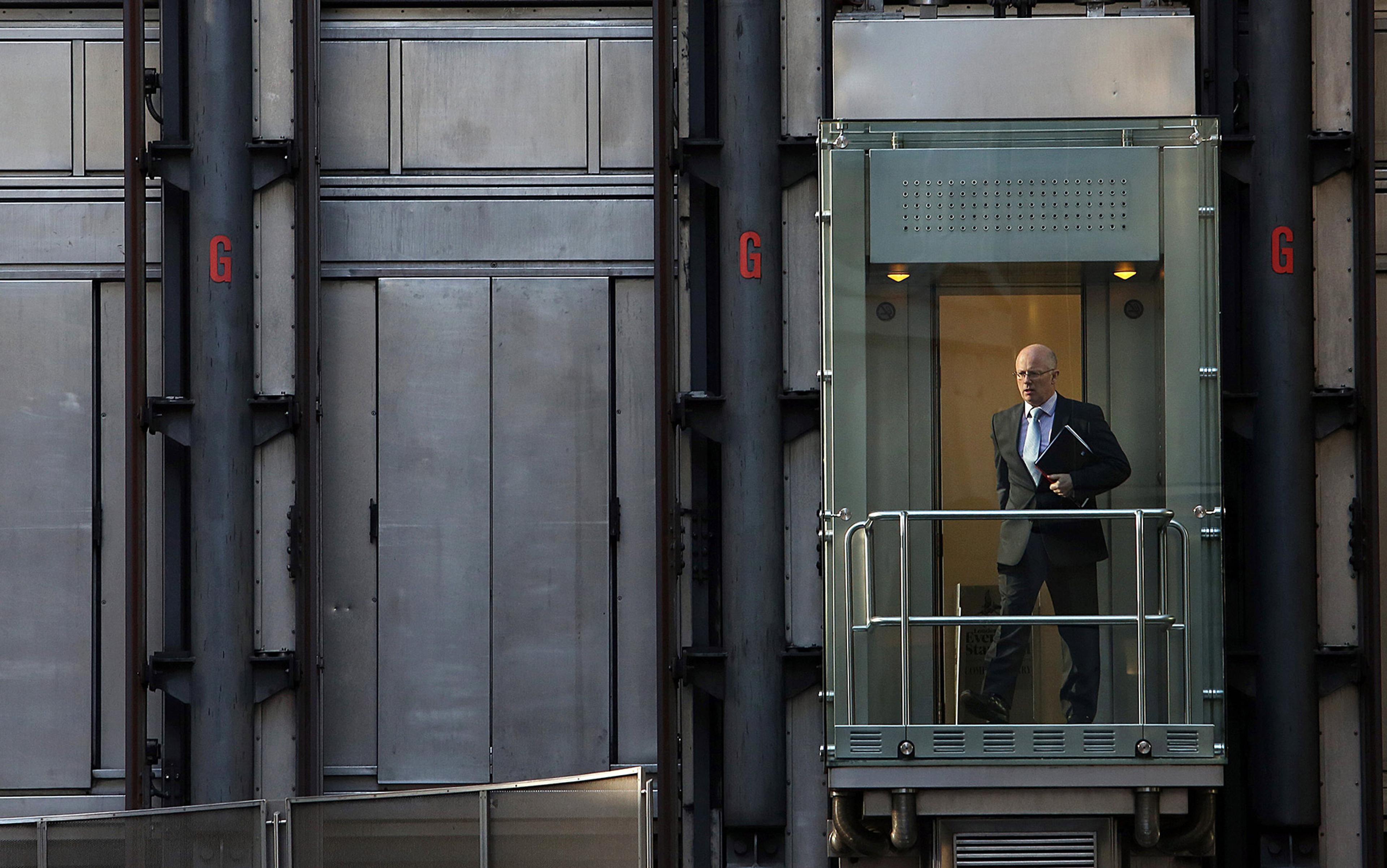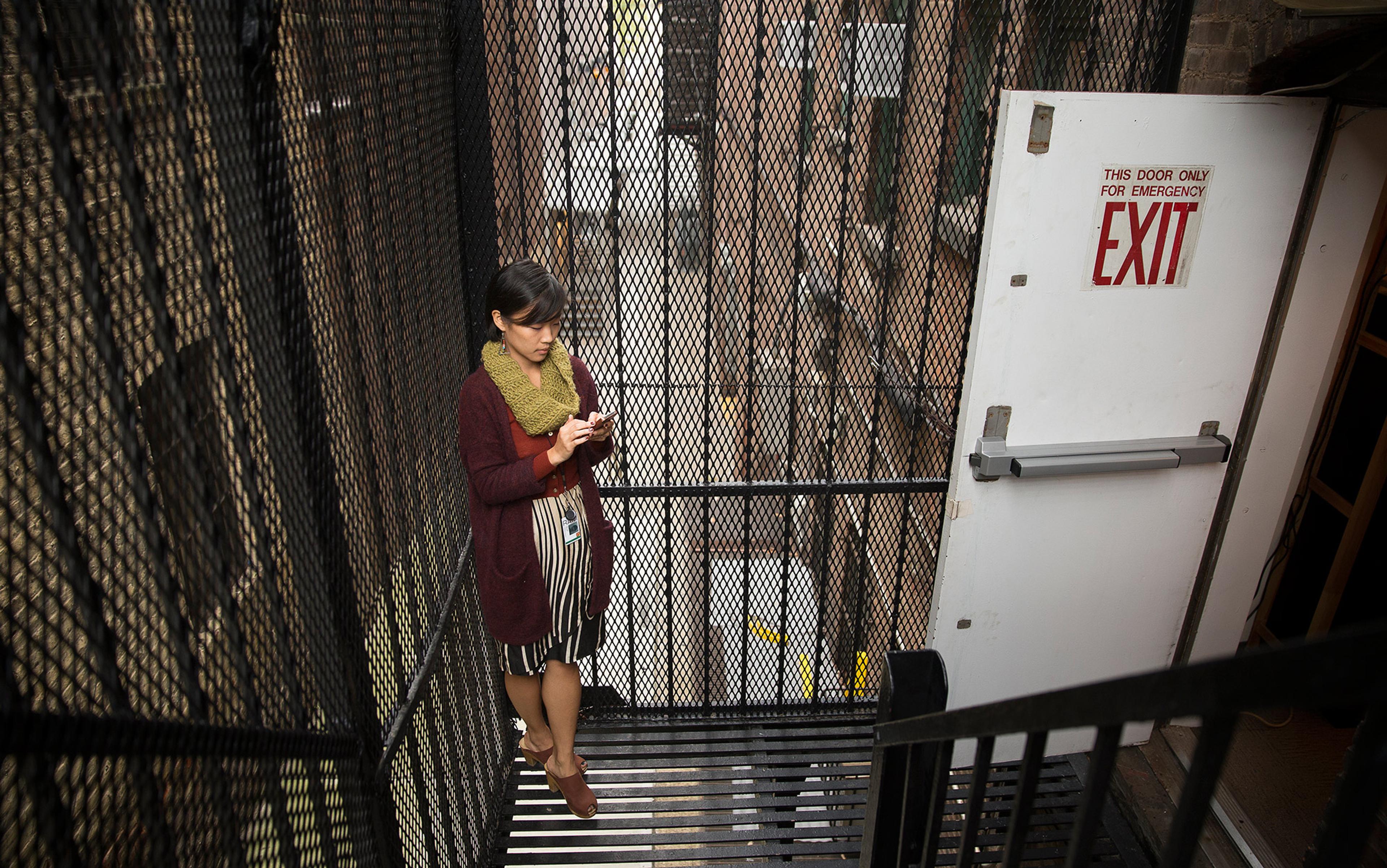Management thinking is notoriously faddish. One week, the gurus, star CEOs, pundits and professors are talking about downsizing as the solution to corporate bureaucracy and inefficiency. The next week, the bandwagon has moved on to knowledge-management. Then to empowerment. And so on – sometimes in cycles, such that old ideas are revived, dressed up and resold to a gullible audience. Serious thinkers might pooh-pooh all this as guru talk, driven by media hype and ‘thought leaders’ hawking their latest books. But fads matter. Often they capture real tendencies and point towards meaningful solutions. Total quality management (TQM), for example, was the hot fad of the early 1990s, but it contained real value. It was popular because many manufacturing firms had overemphasised scale and cost-reduction at the expense of product quality. TQM suggested that maintaining a higher and more consistent level of quality across all company operations was better for long-term performance. Companies and consumers benefited as waste was reduced, and product and service quality increased.
Other management fads are more questionable. For instance, critics have argued that the downsizing craze of the 1990s hollowed US corporations and made them less innovative. Just-in-time inventory control, pioneered by Toyota, might not work for every company. Entrepreneurs are urged to embrace the ‘lean startup’ principle or to adopt ‘design thinking’, but the guidelines are often not very clear.
One of today’s biggest fads is the ‘bossless company’. According to proponents of this idea, management is passé. The American management guru Gary Hamel declared in 2011: ‘First, let’s fire all the managers … Think of the countless hours that team leaders, department heads, and vice presidents devote to supervising the work of others.’ Hamel suggests that all management is waste and, implicitly, that all that managers do is ‘supervise’ – both highly dubious claims. But proponents of the bossless company have other arguments. It seems obvious, they argue, that the 20th-century factory or office with its army of worker-drones is being replaced by flatter organisations, peer-to-peer networks, platforms, extreme decentralisation, worker empowerment, independent contracting, entrepreneurship, and other forms of worker-led democracy. Transactions between firms or between workers can be handled seamlessly through electronic interfaces and managed by the blockchain. Advanced technologies promise real-time access to coworkers anywhere and to all information relevant to the task at hand. Coordination can be handled by employees through lateral consultation with coworkers, and firms can cooperate through electronic means. Why, then, do we need managers?
Such arguments and claims, in turn, lead to predictions that all companies will one day be organised like the game developer Valve and the online retailer Zappos – the current poster-firms of the bossless company narrative (the software-hosting service GitHub used to be among them but recently abandoned the model). Companies will still exist as formal legal entities but they will be flat, not pyramidal. As the popular management writer Tim Kastelle put it in 2013: ‘It’s time to start reimagining management. Making everyone a chief is a good place to start.’ Managerial authority and hierarchy are outdated, ineffective ways of managing and organising, we are told. ‘Bureaucracy must die,’ wrote Hamel in 2014, going on to document various Dilbert-style tropes but without saying anything about how people actually coordinate and cooperate. Just as the top-down, rigid and stuffy Encyclopaedia Britannica was displaced by the bottom-up, flat and flexible Wikipedia, traditionally organised companies are being displaced by the ‘wikified’ firms of the knowledge-based, networked economy with flat structures, peer assessment, self-organising teams, employee ownership, worker democracy and the mobilisation of the spontaneous forces of the market inside hierarchies.
This narrative is not entirely novel. In the 1970s, Bill Gore, the CEO of the US company behind Gore-Tex fabrics, pushed the notion of the ‘lattice organisation’, featuring ‘direct transactions, self-commitment, natural leadership, and [no] assigned or assumed authority’. In the 1980s, Ricardo Semler, the young CEO of the São Paolo-based Semco Partners, made big noises when he rejected the autocratic leadership style of his predecessor (his father) and adopted a radical form of industrial democracy. And in the early 1990s, the Danish businessman Lars Kolind became famous for the flat, empowered and flexible ‘spaghetti organisation’ he introduced to the hearing-aid company Oticon in Copenhagen.
These experiments garnered strong media attention, and were pushed by US business gurus such as Tom Peters, but were generally seen as outliers and oddities. Not anymore. The bossless-company narrative shows up with a very high and increasing frequency in the business press, popular management writing, pop-sociology and so on, usually exemplified by companies such as the California-based agribusiness Morning Star and the Swedish music-streaming platform Spotify. Consultants push practices such as Holacracy that concentrate decision making in self-managing teams as replacements for top-down design, hierarchy and managerial authority. The Holacracy model has mainly been adopted by small and medium-sized companies, but a few larger ones, such as Zappos and the digital bank Tochka in Russia, experiment with it. Meanwhile, Agile, an approach that emphasises cooperation among self-organising, cross-functional teams, has been implemented by Barclays, Ericsson, Microsoft, Google and Spotify, while the US internet retailer Overstock uses internal voting systems to decide company priorities.
In other words, the new narrative on firm organisation is not irrelevant academic discussion or fluffy consultant talk with no serious implications for business. On the contrary, these are ideas that truly matter – and they are already reshaping business.
This movement is gaining steam for a couple of reasons. First, the bossless-company model arguably captures some tendencies, however inaccurately. Second, it is very much part of the 21st-century Zeitgeist in its emphasis on personal development, resilience and fulfilment through empowering employees, and decentralised and democratic decision processes. There is also a strong moralistic and political undertone to the narrative; in Private Government (2017), the philosopher Elizabeth Anderson argues that firms are effectively totalitarian states, enjoying rights and privileges that would be unconstitutional for ordinary states to impose on their citizens. The historian Caitlin Rosenthal has argued that the factory system, hierarchy and managerial authority are partly derived from the slave system. What can be more morally defensible than getting rid of the remnants of slavery?
Unfortunately, the bossless-company narrative is dead wrong. It misunderstands the nature of management, which isn’t going away, and it is based on questionable evidence. Given these fundamental defects, this narrative is potentially harmful to managers, students and policymakers.
To see why, let’s look at what the new narrative is rebelling against – the ‘conventional narrative’. This is the picture of the typical ‘modern’ company with its owners, executives, middle managers and employees – the most salient of what the 2009 Nobel laureate Oliver Williamson called the ‘economic institutions of capitalism’. In a complex, modern, industrial economy, nearly all production takes place inside business firms, and much of what we call the ‘market’ is firms competing or cooperating with each other. Another Nobel laureate, Herbert Simon, in 1991 asked us to imagine an alien viewing the Earth with a special telescope in which firms appear as solid green areas, and market transactions as red lines:
No matter whether our visitor approached the United States or the Soviet Union, urban China or the European Community, the greater part of the space below it would be within the green areas, for almost all of the inhabitants would be employees, hence inside the firm boundaries … A message sent back home, describing the scene, would speak of ‘large green areas interconnected by red lines’. It would not likely speak of ‘a network of red lines connecting green spots’.
In the mid-20th century, bestsellers such as Sloan Wilson’s novel The Man in the Gray Flannel Suit (1955) and William Whyte’s business book The Organization Man (1956) portrayed the large enterprise as a highly efficient – but also bland and dehumanising – machine. In academic literature, Alfred Chandler’s landmark studies of managerial hierarchy, Strategy and Structure (1962) and The Visible Hand (1977), showed how the large enterprise had displaced its smaller predecessors through superior efficiency and productivity. Businesses grow by bringing transactions and activities inside the firm. The managerial function organised in a formal hierarchy is central to the understanding of what firms are and what they do, and for the functioning of the economy. Firms can also reduce the number of transactions they control, for example, by divestments and outsourcing – huge trends in business over the past three decades. However, even if smaller, they remain firms.
This traditionally organised firm was seen, until recently, as an important source of dynamism, wealth-creation and growth. Even critics such as John Kenneth Galbraith and Ralph Nader – who both wanted the corporation regulated heavily to avoid mischief – could not imagine an industrial economy without large companies. Developing countries and rural areas recruited factories, distribution centres and other big firms to generate employment and kickstart their economies. Adam Smith’s 18th-century division of labour idea was gradually brought from the market into the modern industrial enterprise.
Someone needs to be held accountable for the firm’s actions – the buck has to stop somewhere
This narrative has been foundational for most thinking about management. It has informed the way that economists, sociologists, historians and other scholars think about firms, hierarchies and managers. It still unites the thinking of academics, consultants and managers, and it still underpins most subjects taught in business schools. And there is a good reason for that: the old narrative is still largely correct.
Here is what we think is wrong with the fashionable bossless company story: despite big changes in technology and demographics, and increasing globalisation, the basic idea of a firm, the nature of ownership and responsibility, and how people coordinate tasks are the same as always. Firms are designed to produce valuable goods and services by combining resources, including labour, into valuable goods and services. Decisions have to be made about what to produce and how to produce it. Workers need information, tools and equipment, and motivation. And some individuals or groups need to bear the final responsibility, and be held accountable for the firm’s actions – the buck has to stop somewhere. All of this is as true today, in our knowledge-based, networked, empowered, startup economy, as it was during the heyday of the large industrial corporation of the 20th century.
To be sure, authority is increasingly exercised in ways that differ from the caricature of 1950s-style ‘scientific management’. You don’t need a boss to tell you what to do throughout the day or how to interact with other people. But you do need an entrepreneur to launch a venture or establish a sharing platform, an owner or owners to advance the capital and take responsibility for the overall aims of the project, and managers to establish and enforce the rules of the game. That’s what modern management is all about – designing the system in which empowered, knowledge-based workers can thrive. But the basic system with workers and managers is the same.
Despite the bossless-company critique – and the more general hype about the ‘new economy’, the role of knowledge workers, the centrality of networks and platforms, and the like – the old narrative is essentially correct. As the economists Williamson, Chandler, Ronald Coase and others have explained, firms exist to facilitate and coordinate production in ways that are not possible in transactions between firms. We have argued that this account needs to pay more attention to uncertainty, and that it is the firms’ owners, not their managers, who should play the decisive entrepreneurial role. But the resulting synthesis is broadly in harmony with the conventional narrative.
There are three specific problems with the bossless-company critique. First, it doesn’t offer systematic evidence for delayering and radical decentralisation across firms in general, but rather a few cherry-picked examples. In many cases, these firms already had in place a technology that makes decentralisation easy. For example, Valve relies on heavily modularised software development that can easily be delegated to self-managing teams, and firms such as Zappos and Tesla are run by heavy-handed, even overpowering, top managers.
Look at Apple, for example. Its late CEO Steve Jobs made key decisions in a way that can only be described as dictatorial. Under Jobs, according to Adam Lashinsky’s book Inside Apple (2012), ‘only one executive “owned” a [profit-and-loss-statement], and that was the chief financial officer’. In other words, Jobs himself was in charge of everything else. Charismatic figures such as Elon Musk fill the headlines in the business press, though they are often better known for their visionary leadership than their managerial effectiveness. Musk urges his employees at Tesla to interact freely, without regard to divisional boundaries or any sort of chain of command. Communicating through layers of management, he wrote in a company memo a few years ago, ‘is incredibly dumb’. The media fawned: the magazine Inc. noted: ‘A newly acquired email from Musk outlines a brilliant philosophy.’ And yet, as Tesla continues to struggle to meet its production targets for the Model 3 electric car, the company’s extreme reduction in hierarchy levels and Musk’s continual micromanagement, unwillingness to delegate and insistence on doing things differently, are taking some heat. Following the October departure of some key executives, Musk had 29 managers directly reporting to him. No wonder he sleeps on the factory floor.
Also, companies that have survived major shocks to their markets or technology have often benefited from having strong leaders with almost authoritarian leadership styles; think of Disney (under the current CEO Bob Iger and his predecessor Michael Eisner), Apple (under Jobs), Xerox (under Anne Mulcahy) and IBM (under Sam Palmisano). There is a lesson to be learned: centralising the authority to make decisions is usually a more effective way to adapt to unanticipated change than more collaborative, consensus-driven approaches. This is particularly the case for firms with heavily interdependent resources and activities. A lateral, consensus-driven approach will likely lead to those delays that can harm the survival of the firm.
Second, academic research on delayering paints a more complex picture than the cartoon version in the bossless-company literature. One important study observed 300 ‘Fortune 500’ companies for 14 years and found that firms were getting flatter, but were doing so to concentrate authority in the hands of senior managers, not to empower workers. As we’ve seen with Tesla, flatter hierarchies can feature more micromanagement than traditional managerial structures.
Third, while technological miracles such as the internet, cheap and reliable wireless communication, Moore’s law, miniaturisation and information markets have induced sweeping changes in manufacturing, retail, transportation and communication, the laws of economics are still the laws of economics. And human nature hasn’t changed. The basic problem of management and business – how to assemble, organise and motivate groups of people and resources to produce goods and services that consumers want – is still the same. Since the industrial revolution, entrepreneurs have been organising extremely complex activities in firms that are neither completely centralised nor completely flat. Imagine the complexity involved in operating a national railroad, a steel mill or an automobile assembly plant in the 19th and early 20th centuries. These were all ‘knowledge-based activities’ and were conducted in teams organised in various structures. Are things so different today?
As should be clear by now, we think that the bossless-company narrative has been badly oversold by its proponents. Yes, there are conditions under which nearly bossless companies can exist and thrive. However, they are and will remain exceptions. Therefore, the basic message of the classic 20th-century thinkers on the nature and function of the business firm – from the German sociologist Max Weber to the American business executive Chester Barnard and economists such as Coase, Chandler, Simon and Williamson – remains valid today: coordination by designated managers usually works better than any other known method, including the bottom-up, spontaneous coordination among peers stressed in the bossless company literature.
‘Democratic’ decision making is inefficient when each decision affects another
Actually, the benefit of coordination by managerial authority and hierarchy is indirectly highlighted in the descriptions of the poster-companies of the bossless-company narrative. For example, in a description of Spotify, two employees wax lyrical about the company’s structure. The organisation unit is the ‘squad’: a team of developers. Squads are organised into ‘tribes’: collections of squads working in related areas. In turn, ‘chapters’ cut across tribes, organising people with similar competencies. Tribes and chapters coordinate interdependencies and promote economies of scale, assisted by managers who make sure these goals are met. Um, okay: this sounds like the well-known ‘matrix’ structure, only with cute labels for the various organisational units. (The matrix structure has been around since at least the 1950s, when it was used for handling complex projects in the emerging US aerospace industry.)
A question worth asking, however, is whether authority today is the same as authority in the past. Answer: not exactly. The kernel of truth in the new narrative is that for many everyday business activities, employees no longer need a boss to direct them on tasks or to monitor their progress. Such involvement can actually be demotivating, particularly for highly qualified specialists. This means that managers need to move away from specifying precise methods and processes. Instead, they should specify goals and the overall principles they want employees to apply. The main task for top management is to define and implement the organisational rules of the game. Back in 1990, the Canadian management thinker Henry Mintzberg outlined different managerial roles such as figurehead, spokesperson, entrepreneur, resource allocator, monitor, leader, disturbance handler and so on. In a charitable reading, the new narrative asserts that the manager doesn’t do all this anymore, because much can be delegated. We agree, but some person or persons might be needed to set direction, define the rules of the game, allocate resources and act on disturbances. These cannot normally be delegated.
To some extent, however, what management does and how much it does depends on the environments, technologies and activity systems of companies. If technologies are highly ‘modular’, such that components and activities can be decomposed into smaller units and combined in different ways, then managers might need only to maintain the rules of the game, even in highly dynamic environments. For Valve, for instance, software development can mostly be modularised and allocated to self-managing teams. However, maintaining the organisational rules of the game is often a highly challenging task. Teams and activities must be coordinated so that everything works together. Designing and maintaining reward systems can be challenging when market conditions, deliverables, regulations and the like change frequently. Ultimately, however, good management is about the rules of the game.
It is when technology and activity systems are highly interdependent that a more hands-on approach is needed. In dynamic environments, decisions become highly time-sensitive, and ‘democratic’ decision making is inefficient when each decision affects another. Often the knowledge about who should do what to coordinate responses to changes in the environment resides within the management team – who therefore should make the decision. Indeed, it is exactly because of more dynamic environments, greater time-sensitivity, a need for expert decision making and a focus on internal alignment that we see top management teams expanding at the same time as companies have been delayering.
In short, today’s business landscape features exciting developments in information technology, networking and collaboration that have led to new forms of organisation, production and distribution. Far from making management obsolete, however, these changes make good management more important than ever. The shift from management as direction to management as making and enforcing the rules is slowly entering the management literature and the business-school curriculum. That’s a paradigm shift worth embracing.






